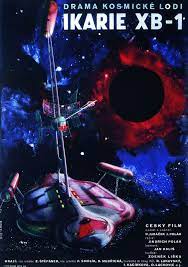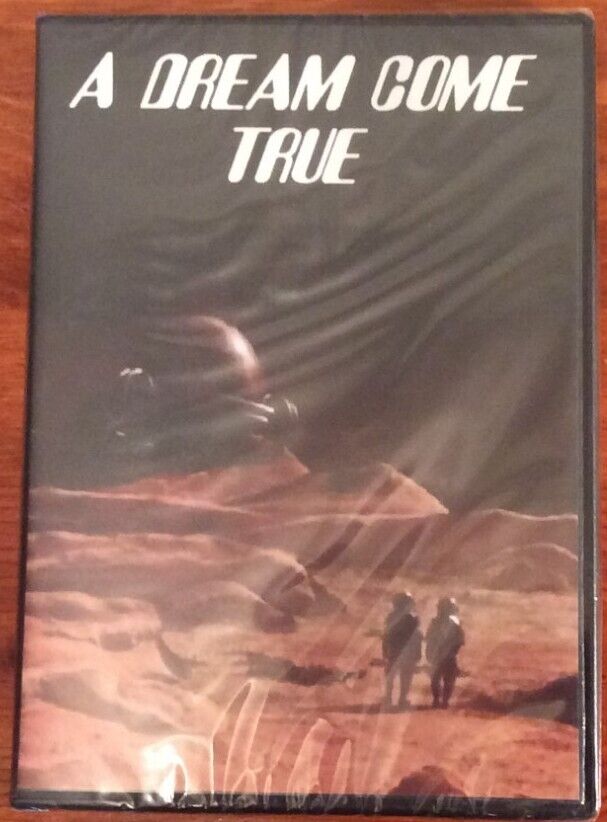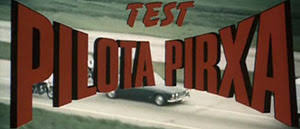Ikarie XB 1 (1963) aka Voyage to the End of the Universe (1964)
IMDB runtime is 1 hour and 21 minutes, rated 6.9 by 2,500 cinematizens.
Genre: Sy Fy; Species: Czechoslovak
Verdict: Geriatrics in space.

Having concluded there is none on Earth, in 2163 the search for intelligent life turns to the planets around Alpha Centauri. Slovakczech may be the label but the story is from the prolific Pole Stanislaw Lem.
Space flight is routine in the Solar System but this mission goes well beyond that limit, however not to the hyperbole of the English title above. With a crew of 40 men and women it is as much a colony as a ship. So said the narration, though why that is does not get explained. It is made clear that it is a round-trip not one-way. Why so many comrades? By the way, they do not address each other with that word, according to my hearing and reading (of subtitles). Note that the woman are not receptionist but scientists and engineers in this 1963 production. That was not done in Yankee SF in 1963.

The usual hazards of movie space travel follow. The low bid contractors strike with mechanical and technical failures, followed by hurtling objects, while among the carefully selected and highly trained crew we see tensions, lassitude, jealousies, and ennui (Hear! Hear!). Even more noteworthy is the anti-ageism so that several geriatrics included in the crew. As an equal opportunity employer Slovak/Czech Spaceways also hired Robbie the robot from Forbidden Planet, who contributes nothing to plot or action but is conspicuously present. Rather like the fraternity brothers, always there, always inert.

Two major incidents occur. First, way out there where no one has gone, they find a derelict spaceship. It looks battered and it is unresponsive to WhatsApp texts. Very tentatively two red shirts from the crew (both men) are dispatched to board it. The entry is slow and careful. They find all the many occupants dead. The deceased are human and — get this! — the men are besuited with neckties while the ladies are bejewelled, all sitting around a gaming table with US dollars on it. This ship, which seems to have been a secret by the unnamed, but hint, hint, you know who I mean, evil capitalists as it is armed with poison gas and nuclear missiles. While the two investigators are clopping around they inadvertently trigger the self-destruct bomb and…. no more them. Why did evil capitalists go half-way to Alpha Centauri with all those weapons to play cards is never explained. Did they take a wrong turn on the way to Vega? Apart from shedding two red shirts, the only point of this episode is to denounce the West for it corruption (gaming), wastefulness (dress), and aggression (weapons). Oh, and they killed each other in their insatiable greed.
Back on the mother ship there is a moment of silence for the departed red shirts before everyone goes dancing. Yes, there is another one of those strange dance sequences choreographed to keep everyone on their floor marks for the camera focus. Mostly the dancers stand and stare at each other. Wow! Little did I know that I could dance.
The second incident is more insidious and produces radiation sickness among the crew and the worst case goes nuts. They decide to sleep it off. The fraternity brothers were ahead on that. Good idea. Me, too.
It has a nice ending when they are saved by the unseen but unmistakable intervention of benign beings from Alpha Centauri who wrap the ship up in a force field to stop the radiation. It ends on this positive note. The surviving 37 and Robbie can start planning for the return trip! That is, after they swap the complete works of Lenin for souvenir T-shirts from Alpha Centauri.
The slow start was almost worth this upbeat ending, almost. It is on You Tube with subtitles in English. This is the original version. According to the scribes, there is a dubbed and edited Yankee version that makes considerable changes at the end. Sounds like Roger Corman at work. Beware.














